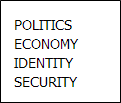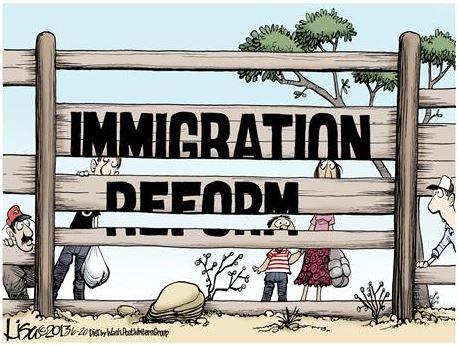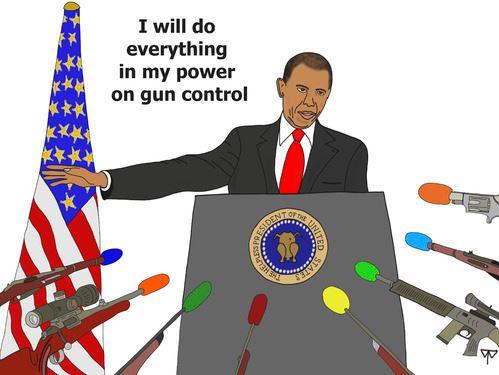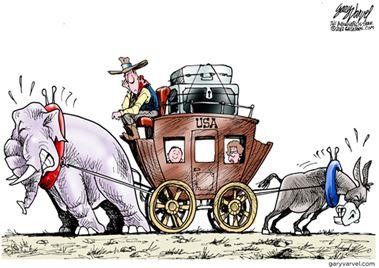140104
POLITICS: PARTY POLARIZATION
ECONOMY: BUDGET DEALS
IDENTITY: IMMIGRATION REFORM
SECURITY: GUN REFORM
_______________________________________________________________
SERIES: AMERICAN CONCERNS This Post is the first in a January 2014 Series asking: What problems most worry American intellectuals, politicians, and policymakers? This Post treats concerns about the SHORT RUN. Later Posts will treat the mid run, long run, and China.
_______________________________________________________________
WELCOME TO NEW READERS AT THE CENTRAL PARTY SCHOOL! This Blog tries to provide Chinese intellectuals and policymakers with leads to the best analyses of American politics and policies by America’s smartest media commentators and social scientists.

_______________________________________________________________
AMERICAN CONCERNS: SHORT-RUN POLITICS
140104
This Post defines shortrun problems as those already on the USA’s policy-making agenda. This Post provides only a brief overview of that agenda, with references to longer treatments in this Blog and elsewhere. First we note concerns about Politics as a whole. Then we note the main current issues in Security, Economy, and Identity.
Overall, what the American media report as the main “current concerns” are often VERY shortrun, changing constantly. The reason is that politicians are continuously testing “new things” to see if they will attract attention and support: new problems, new definitions of old problems, new solutions to old problems.
What lasts longer are the kinds of alleged solutions to these alleged problems that conservatives and progressives propose. Each side knows what it wants to do (lower taxes, raise spending) and is constantly searching for excuses to do it. Accordingly, Chinese readers should not expect a strong logical relationship between actual problems, identified problems, and proposed solutions.
(Earlier Posts on this Blog can be found at http://edwinckler.blog.caixin.com/ References to articles on the analytical sites Wonkbook, Wonkblog, and The Monkey Cage can be found at )
POLITICS: PARTY POLARIZATION
Over the last decade, EVERYBODY in America – elites and publics, Republicans and Democrats – has begun worrying about American politics. Americans remember the “bipartisan” way in which American politics worked for most of the 20th century. Americans suppose (mistakenly) that American politics always worked that way. Relative to that idealized past, today American politics appears “broken.” Certainly there is a problem: the policy process is deadlocked and doesn’t produce needed policies. (See the series about polarization starting 140108 on The Monkey Cage at The Washington Post.)
However, the main CAUSE of this problem is NOT that, overall, the ordinary American PUBLIC is now more polarized than in the past. (However, it IS true that people with different views have sorted themselves into different geographic regions and therefore are more spatially concentrated than in the past.) Instead, the main cause is that America’s political PARTIES are now highly polarized. (On the USA’s current “political chessboard” for making policy, see the first part of Edwin A. Winckler 2011 “Obama reform politics,” Nankai xuebao 2011,1 (January) 32-44 [in Chinese].)
Increasingly exclusively, Republicans represent so-called CONSERVATIVISM. For support from voters, they increasingly rely on an increasingly narrow and increasingly extreme conservative political base, particularly between the two coasts, particularly southern and rural. Democrats represent so-called PROGRESSIVISM. They rely heavily on urban populations, particularly on the two coasts, most particularly minorities and better-educated women and youth. (On the map below, Republican congressional districts are red and Democratic districts are blue.)
Except during nation-wide presidential campaigns, neither side has much incentive to appeal to or placate voters who support the other side. When it comes to making policy, incentives are stronger for politicians to demonstrate the purity of their conservatism or progressivism (in order to appeal to their “base”) than to compromise on workable legislation. Moreover, as it happens, each side has the support of about half of Americans.
Consequently, each side has both incentive and power to block anything the other side wants to do, at least through the legislature. So, in his second term, Obama will be turning increasingly toward things that the executive branch can do on its own, without further legislation. Here a main possibility is further regulation of emissions from burning coal, in order to minimize health hazards and climate change.
As a result of political deadlock, a main characteristic of current American politics is that most policy-making is itself short-term. The two sides can agree only when they really have no other choice, because some imminent crisis looms, such as the government running out of money and having to shut down. Even then one side or the other may insist on shutting the government down for a while rather than compromise on their alleged ideological principles.
ECONOMY: BUDGET DEALS
One of the more important developments in recent American politics was that in early October 2013 the Republicans briefly shut down the government, over the issue of increasing the amount of money that Congress allows the executive branch to borrow. (Raising the “debt ceiling” does not authorize new expenditures, but instead simply pays for programs that Congress has already enacted.) The October 2013 shutdown somewhat harmed the American economy and greatly alarmed the American public, which responded by sharply decreasing its support for Republicans. (On the American politics of “fiscal crisis,” see the 130105 post on this Blog.)

By December 2013 congress faced another fiscal issue, how much government spending to approve for October 2013 through September 2014. This time some Republicans were afraid to further antagonize the public and so voted with Democrats to pass a “compromise” budget bill. As both sides wanted, the bill did somewhat relax some excessively severe cuts in spending that began in January 2013 (“sequestration”). The bill also compromised between Republican desires to cut social spending and Democratic desires to increase it. The bill covered not only 2013-2014 but also 2014-2015, allowing politicians to avoid another difficult budget vote in 2014, an election year.
The December 2013 budget bill – the Bipartisan Budget Act – avoided another “fiscal crisis” in January 2014. The bill was negotiated in a less confrontational way than has been typical for fiscal matters over about the last five years. Commentators began wondering whether American politics might be returning to “normal,” with the Congress actually doing its job of managing appropriations. Certainly it was better to have the December 2013 bill than not to have it. But it was a rather small accomplishment, relative to what Congress needs to do (see Plumer 140106 on --Wonkblog). Actually the bill was not really a compromise about anything that either side really wanted: instead, the bill simply avoided doing much about those issues. Moreover, the debt ceiling needs to be raised again in March 2014. In exchange for agreeing to that, some Republicans are already demanding that Democrats agree to cut spending on social programs. So there could be another big fight.
The accompanying Chart shows the extent to which the December 2013 budget deal – the Bipartisan Budget Act (BBA) – differed from the main alternative possibilities. As the Chart reflects, the BBA applied only to the part of the national budget that is “discretionary” – that is, that congress can change from year to year. The two main parts of discretionary spending are Defense and non-Defense (most civilian government activity). (Non-discretionary spending consists mostly of social programs such as Social Security, Medicare, and Medicaid.)
As the Chart shows, spending under the BBA will be higher for both Defense and non-Defense than it has been under the “sequester.” Spending under the BBA will be lower in both Defense and non-Defense than it would have been under Obama’s presidential proposals. On Defense, BBA spending will be lower than both congressional Democrats proposed (through representative Patty Murray) and congressional Republicans proposed (through representative Paul Ryan). On Non-Defense, BBA spending will be lower than Democrats proposed (Murray 2014) but much higher than Republicans proposed (Ryan 2014).

IDENTITY: IMMIGRATION REFORM
In the area of social and cultural policy, the main underlying issue is American Identity. What is “Americanism”? Who can represent it? Is America “exceptional” in the world (often meaning “better than” other countries)?
More specifically, does Americanism consist only of the now NATIVIST White Protestant male values brought over by settlers from England during the colonial period? Or does Americanism consist mostly of the UNIVERSALIST values expressed in the American Revolution, now applied equally to everyone regardless of income, gender, or race? Or is Americanism now becoming more COSMOPOLITAN, recognizing and celebrating different American ethnicities and their continuing connections with other parts of the globe?
In practice, Republicans represent largely the Nativist view and Democrats the Universalistic or even Cosmopolitan views. Most of the congressional districts that elect Republican politicians contain mostly white middle-class (often older) Americans, with relatively few minorities, particularly recent immigrants. On Identity issues such as how to reform IMMIGRATION, at least in the short run, those Republican politicians benefit politically from limiting the number of new legal immigrants and strengthening borders to prevent illegal immigration.
The problem for Republicans is that, in America as a whole, the number of “cosmopolitans” is gradually increasing: both new immigrants and people who support more immigration. Republicans may continue to hold the more conservative congressional districts but, as 2012 showed, it is becoming increasingly difficult for the Republican candidate to win a national presidential election.
Despite the 2012 defeat of their presidential candidate, some Republican politicians still refused to reform immigration, except by further tightening border controls. Some Republican politicians – particularly extreme conservatives hoping to run for president in 2016 – endorsed the idea of Immigration Reform, but only limited reform. However, many centrist Republican leaders vowed to support stronger reform, including some way to allow the 11 million immigrants already in the USA “illegally” to remain in the USA legally. Democrats too wanted to do that. For a short time after Obama’s 2012 reelection, it looked as though there might be some Immigration Reform in 2013. (On the American politics of immigration reform, see the 130202 and 130209 Posts on this Blog.)
However, the usual politics of immigration reform began to set in. Conservatives and progressives can agree more easily to EXCLUDE ILLEGAL immigrants by strengthening border control (as conservatives want) than they can to ACCOMMODATE LEGAL immigrants by modernizing immigration rules (as progressive want). The relatively moderate Senate succeeded in passing immigration reform that was “comprehensive” in the sense of including both Exclusion and Accommodation (though even the Senate strengthened Exclusion and minimized Accommodation). The more extreme House refused even to attempt “comprehensive” reform, preferring separate bills dealing with particular issues. Probably the bills that Republican House leaders MIGHT allow to pass the House would strengthen Exclusion, not increase Accommodation.
Meanwhile, at the end of 2013, a school shooting in Connecticut placed “gun control” on the agenda. That diverted attention from immigration reform, which then lacked the political momentum to overcome differences. At the beginning of 2014, the question is, do upcoming elections – the imminence of the 2014 congressional elections and the prospect of the 2016 presidential election – decrease or increase the likelihood of some movement by House Republicans toward some immigration reform? Most commentators have said that the late 2014 elections make such movement unlikely, and many do not expect much reform until after the 2016 elections. Nevertheless, House Republican leaders are now preparing some relevant principles. Similarly, rising young Republicans who hope to run for president in 2016 are suggesting principles and proposals.
The stalemate over immigration legislation has raised the question of how much Obama can accomplish through executive action, without further legislation. The basic answer is, not much. Congress has mandated that the 11 million immigrants already in the USA illegally be deported, which the American immigration system can do only at the rate of about 400,000 a year. By Congressional mandate, the president must continue deportations. Nevertheless, he can indicate WHICH of the 11 million will be deported sooner and which later. He has already done that, deferring the deportation of some young people: those brought to the USA by their parents illegally who have completed education and have no criminal records. He can’t do much more. (See Plumer 131114 on Wonkblog.)

SECURITY: GUN REFORM
Unfortunately, there is little to say about reform of laws to control guns. As with immigration, reform gained some political momentum toward the end of 2012. As with immigration, in the course of 2013 reform faced intense political differences. As with immigration, so with guns, by the end of 2013 the prospects for reform appear dim. (On the American politics of gun control, see the 130119 and 130126 Posts on this Blog.)
The only thing that has happened in American regulation of small guns is something that, as a result of the school shootings, did NOT happen. In 2012 the Obama administration had been planning to simplify procedures for American gun manufacturers to export their products. But the December shooting made such loosening of exports potentially controversial. So the simplification was delayed and, at the end of 2013, still has not gotten back on track. The effect is to continue to limit exports of American sporting guns to other countries. (Lydia DePillis 131216 Washington Post).
0
推荐





 京公网安备 11010502034662号
京公网安备 11010502034662号 